
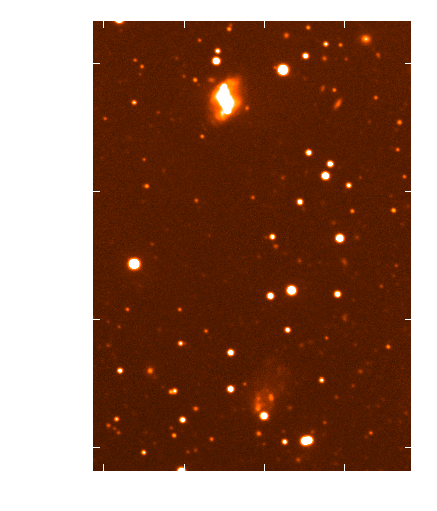
Introduction
It has been know for some
25 years now that star formation (SF) in dwarf irregulars (dIrrs) occurs
in bursts - the simple argument being that dwarf galaxies do not
have enough fuel in order to form stars at the observed high SF rate for,
say, a Hubble time. The picture to emerge is that this bursting nature
converts a dIrr galaxy into an HII-galaxy, a Blue Compact Dwarf (BCD),
or Wolf Rayet (WR) galaxy, depending on which characteristics are chosen
to classify an actively star forming dIrr. II Zw 33, shown here, is a prominent
example of a WR galaxy (see, e.g., Vacca & Conti 1992).
The main question about
starbursting galaxies is what causes the burst. One suggestion is that
interactions are responsible (see, e.g., Taylor 1997 and references therein).
Brinks (1990) indeed discovered a companion HI cloud near II Zw 33 at nearly
the same redshift. This makes it tempting to ascribe the current starburt
in II Zw 33 to an interaction with this companion.
This formed one of the motivations
for us to obtain better HI data using the Very Large Array and additional
B-band photometry of both objects. Recently, Mendez et al. (1998) presented
high resolution H-alpha imaging of II Zw 33, reporting that star formation
seems to be propagating from the center outwards and along the prominent
bar-like feature (see below). In what follows we will try to demonstrate
how their result nicely fits into our picture that the bursting phase was
indeed triggered by an interaction with the low surface brightness companion.
Observations
HI observations
II Zw 33 and its companion were observed with the NRAO Very Large Array (VLA) in B- and C-array in the 21cm line of neutral hydrogen (HI). A full account of the data reduction is given elsewhere (Walter et al. 1997). A map of the distribution of the HI in both galaxies is shown in Fig. 1 (left). Adopting a distance of 38 Mpc, we derive the following HI masses: IIZw33 (north): 1.0.109 Msun; companion (south): 0.6.109 Msun. Note that the HI masses of both galaxies are of the same order of magnitude. Also their HI sizes are fairly similar. A blowup of both galaxies is shown in Fig. 2. The velocity field of both galaxies is superimposed on the optical map in Fig. 3.


Figure 1: Left: HI surface brightness map of II Zw 33 (north) and its companion (south). Right: B-band image of the same area of the sky. Note that although the HI masses of both galaxies are rather similar, their optical properties are quite different.Optical Observations
II Zw 33 and its companion were observed with the 4-m telescope of the Kitt Peak National Observatory (KPNO). The B-band map is shown in Fig. 1 (both galaxies) and Fig. 3 (blowups). The contours in Fig. 3 represent the velocity field. Note the almost linear north-south chain of massive, young stars in II Zw 33. The companion is hardly visible in the optical - in fact the companion would not have been detected at all in optical surveys if one would not have been specifically searching for it! Note that both II Zw 33 and its companion are more extended in the HI then in the optical. Using our optical observations, we derive an HI-mass to blue luminosity, in solar units, of 0.31 (II Zw 33) and 1.83 (the companion).
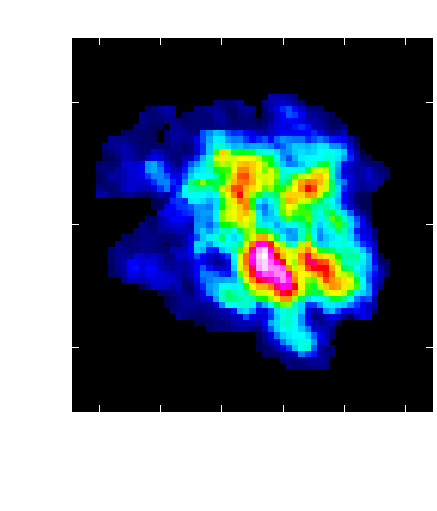
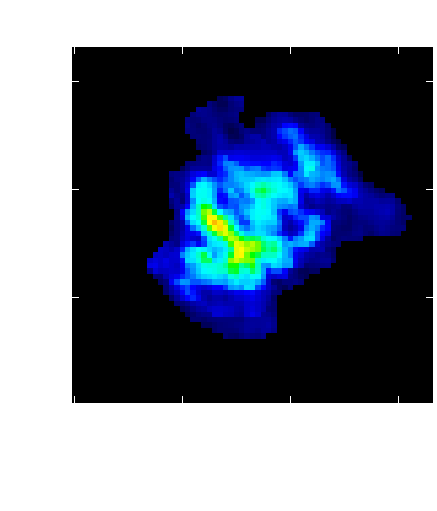
Figure 2: HI surface brightness map of II Zw 33 (left) and its companion (right).
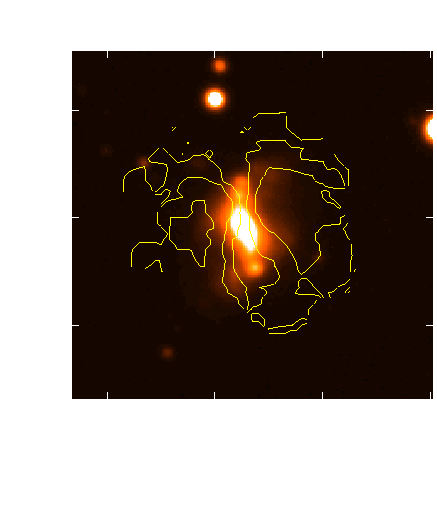
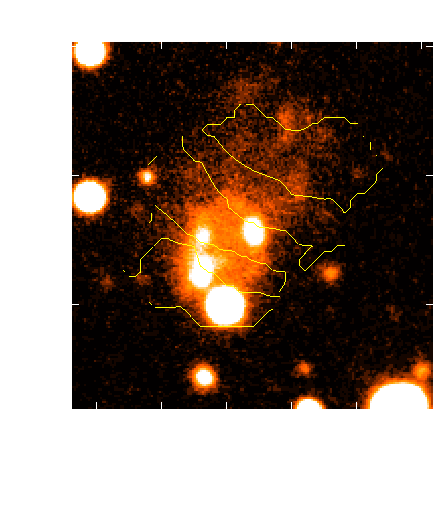
Dynamical Analysis
Walter et al. (1997) performed
a detailed dynamical analysis of both II Zw 33 and its companion. Only
the results are summarized here and the interested reader is referred to
their paper. Somewhat unexpected, neither IIZw33 nor the companion
need dark matter to explain the observed rotation curve out to the last
measured point. This is a major difference with other dwarf galaxies studied
thus far, most of which seem to be dark matter dominated throughout. It
is likely, though, from an analysis of their relative orbit, that a considerable
amount of dark matter is hidden between the objects.
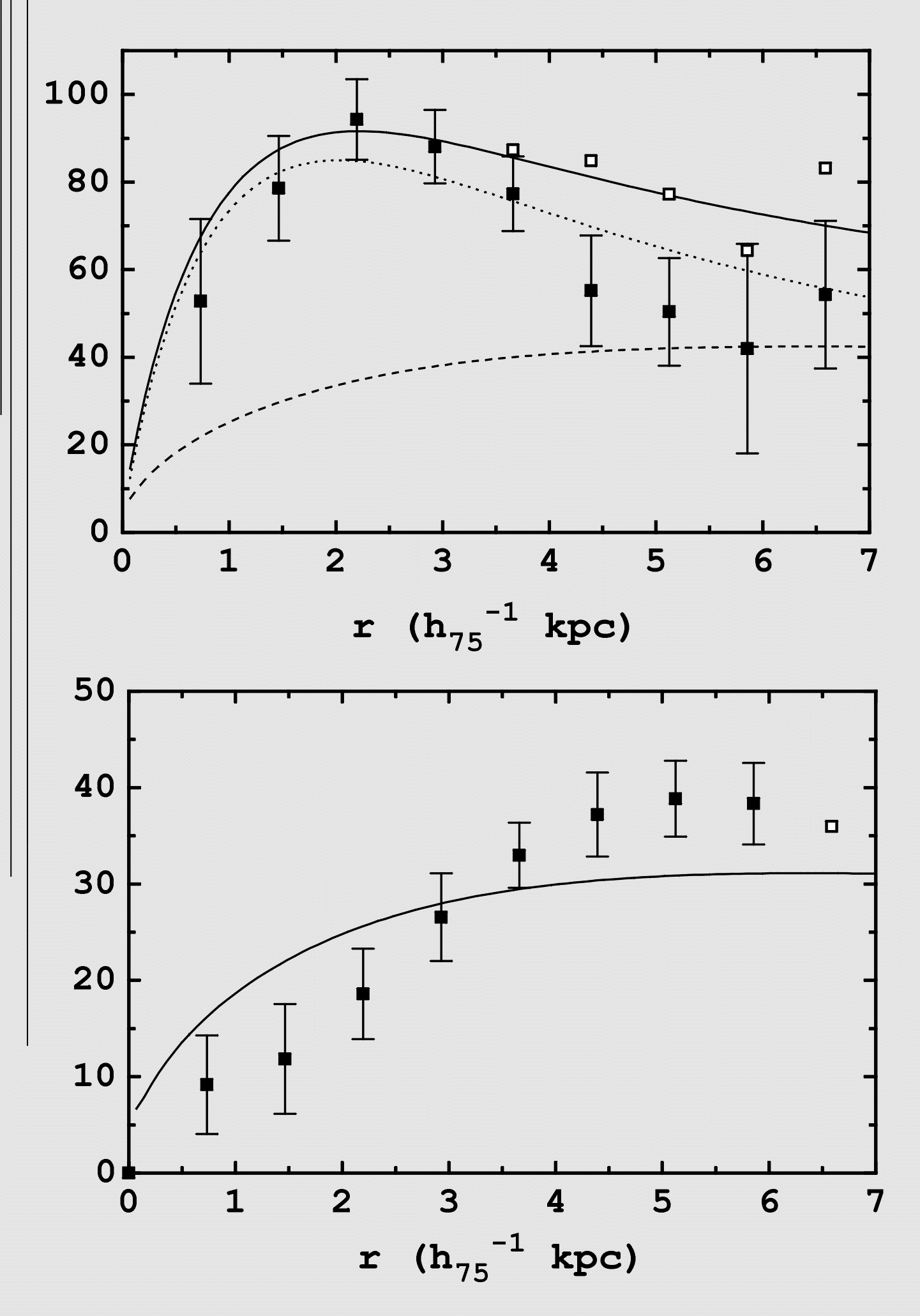
Discussion
In the following we assume that II Zw 33 and its companion are indeed a bound system and that we are not observing a chance superposition or a chance encounter. The rather small velocity difference between them of about 50 km/s suggests that their relative orbit lies more or less in the plane of the sky. The projected separation of the galaxies (about 50 kpc) is therefore probably close to the true separation. Taylor et al. (1996) show that in their sample of BCD galaxies, many of which have companions, the difference in systemic velocity between dwarf galaxy and companion is always less then 150 km/s. Accepting this latter value as an upper limit to the true space velocity and 50 kpc as a lower limit for the separation, we derive an elapsed time since perigalacticon of 3.108 years.
Note that the HII regions
in II Zw 33 cannot be older than 107 years.
Therefore the time since a possible flyby seems at first sight too high
for this to be the trigger of the observed burst. However there are a few
arguments which favor the scenario that this encounter indeed triggered
the observed burst in in II Zw 33. First of all, Mendez et al. (1998) argue
that strong SF has proceeded in the galaxy over a longer period than that
corresponding to a single burst. In fact they find clear indications that
star formation is propagating from the center outwards along the apparent
bar. Another argument is provided by the model developed by Noguchi &
Ishibashi (1986). They show that the maximum activity of a burst produced
by an interaction takes place after about 3.108
years of closest approach, exactly what we find for the time since perigalacticon.
In summary, there is considerable circumstancial evidence that the interaction
with the companion transformed the 'quiescent' dwarf Irregular II Zw 33
to the Wolf Rayet galaxy we witness today.
Summary
II Zw 33 is a gas rich Wolf-Rayet
galaxy. A high resolution H-alpha study by Mendez et al. (1998) shows that
the current starburst is propagating from the center outwards, along the
apparent bar of II Zw 33.
A companion galaxy is detected
at almost the same redshift as II Zw 33.
The companion has virtually
the same HI mass as the parent galaxy although their optical properties
are quite different. The companion can be classified as a Low Surface Brightness
galaxy. A
dynamical analysis shows that surprisingly neither II Zw 33 nor its companion
require any dark matter component.
Using best estimates for
the orbital parameters, we derive a time elapsed since perigalacticon of
3.108 years. This number is
in excellent agreement with the model by Noguchi & Ishibashi who derive
that one indeed expects the maximum star formation activity to occur on
this timescale.
In summary, our HI and optical
observations as well as Mendez's H-alpha study lends support to the scenario
that the companion has triggered the current burst of star formation in
II Zw 33 hence transforming a quiet dwarf irregular into a Wolf-Rayet galaxy.
References
Brinks, E., 1990, in 'Dynamics
and Interactions of Galaxies', ed. R. Wielen,
Springer, p. 146
Mendez, D.I., Cairos, L.M.,
Esteban, C., Vilchez, J.M., 1998, 'Proceedings: The Magellanic Clouds and
other
Dwarf Galaxies', eds. T. Richtler, J.M. Braun, Shaker Verlag, click
here
for online paper
Noguchi, M., Ishibashi,
S., 1986, MNRAS, 219, 305
Taylor, C., Thomas, D.,
Brinks, E., Skillman, E.D., 1996, ApJS, 107, 143
Taylor, C., 1997, ApJ, 480,
524
Vacca, W.D., Conti, P.S.,
1992, ApJ, 401, 543
Walter, F., Brinks, E.,
Duric, N., Klein, U., AJ, 113, 2031